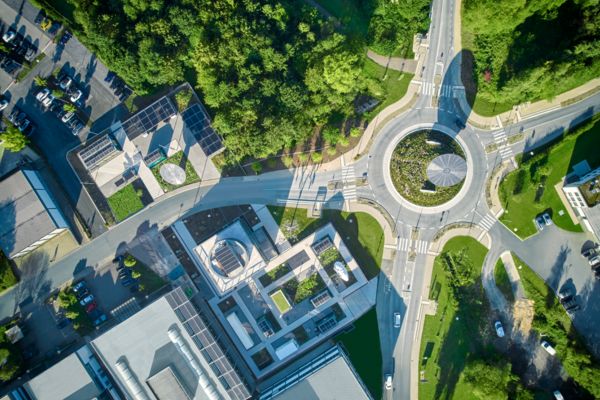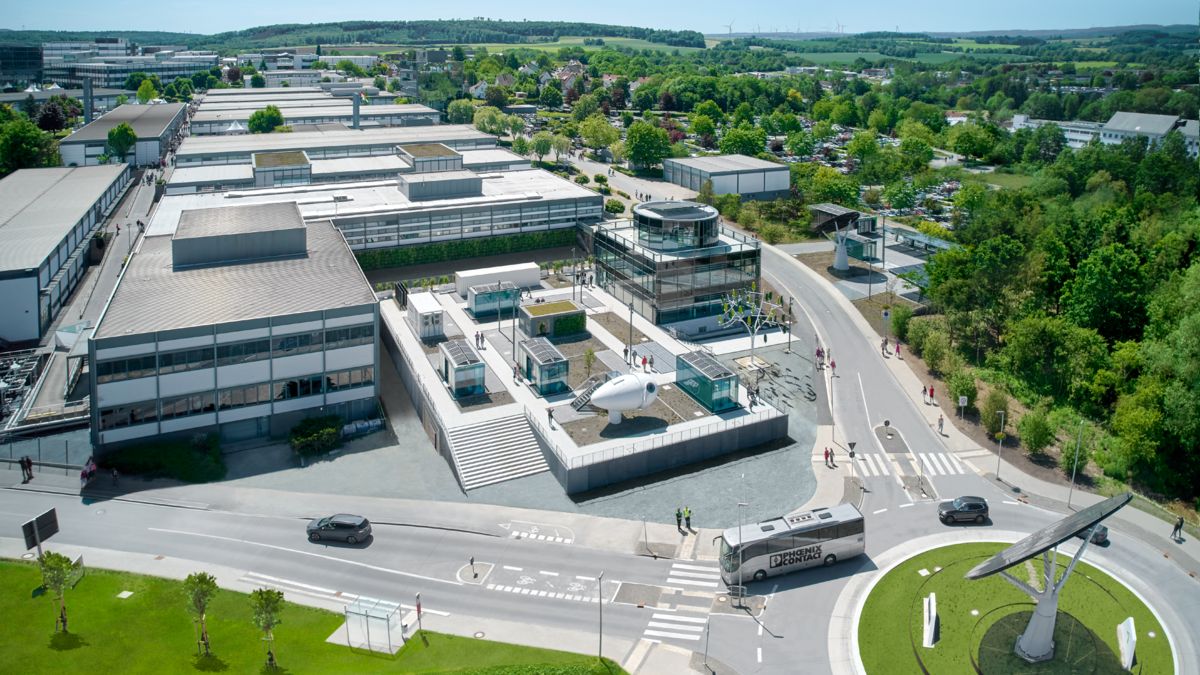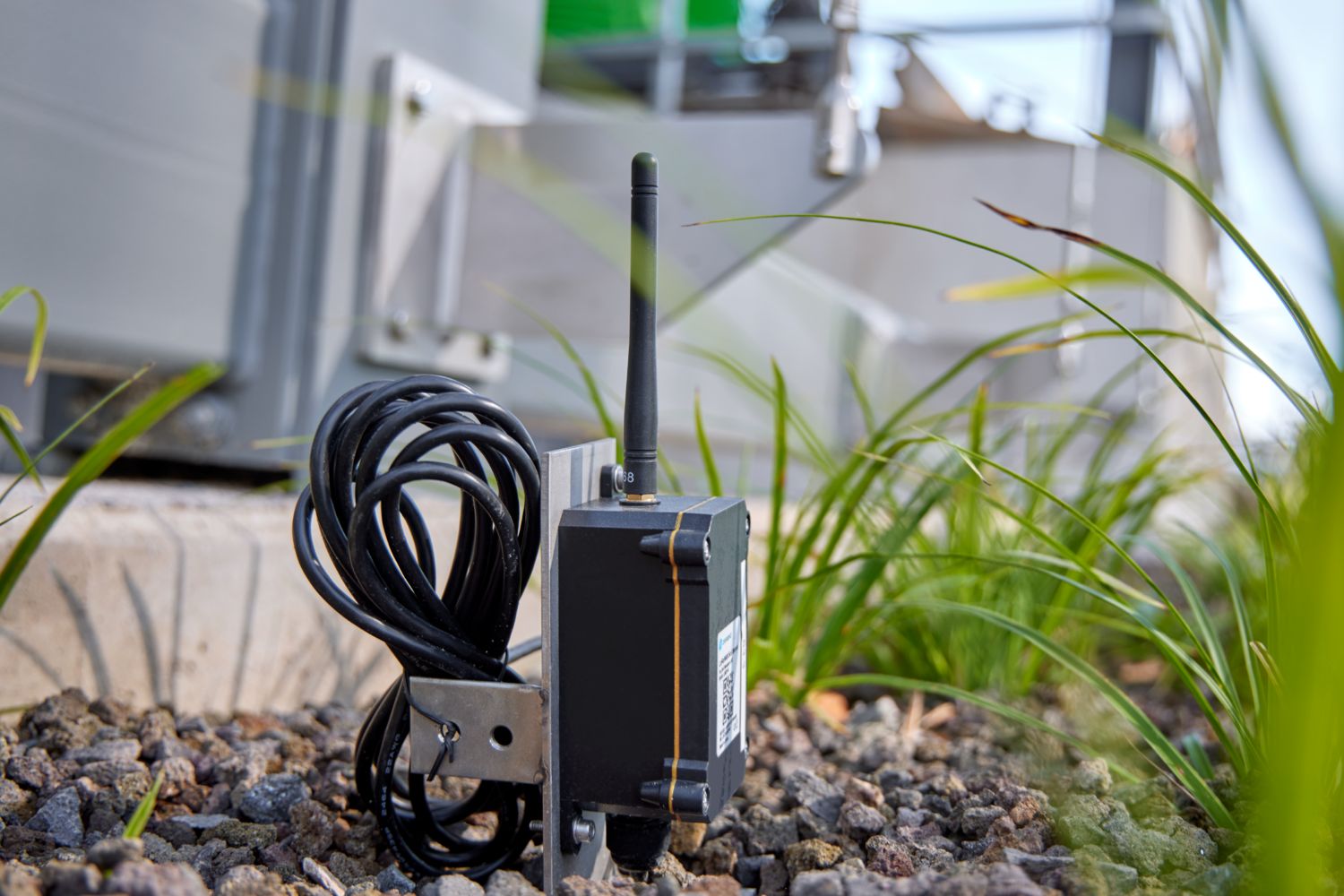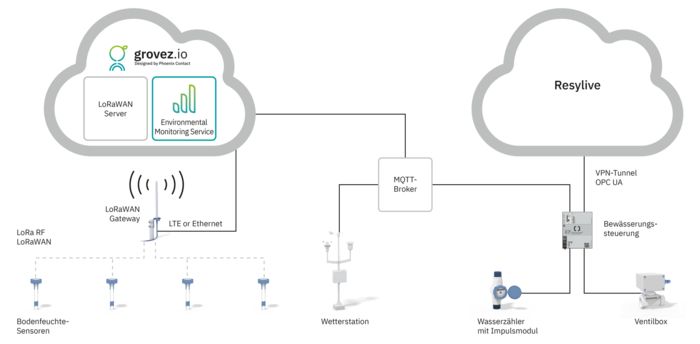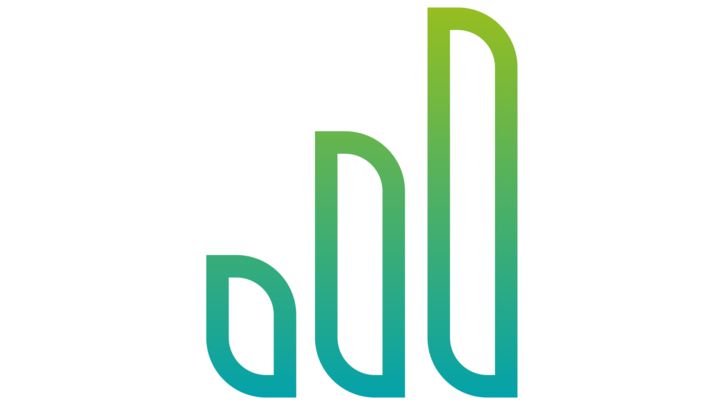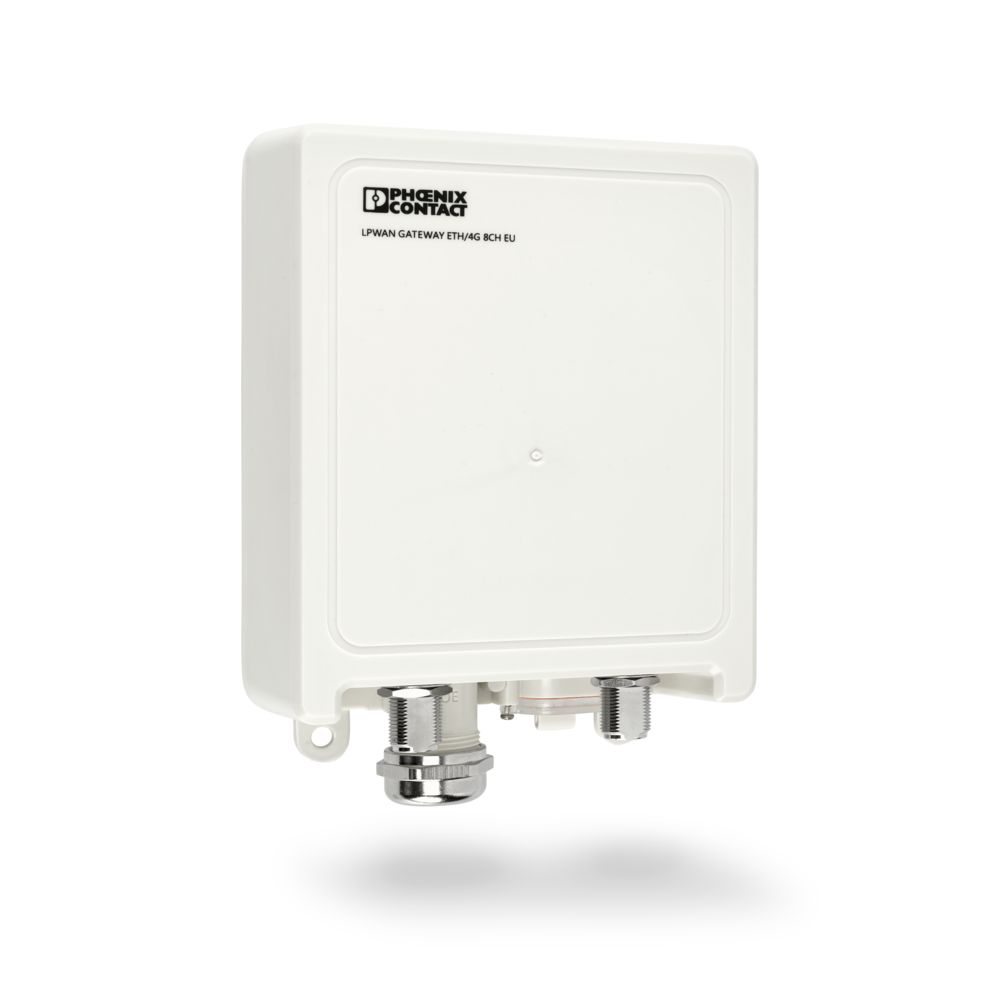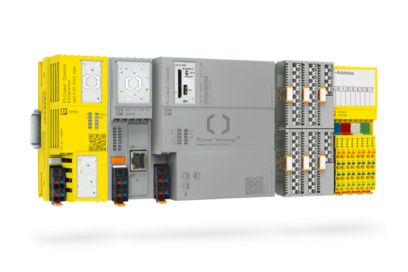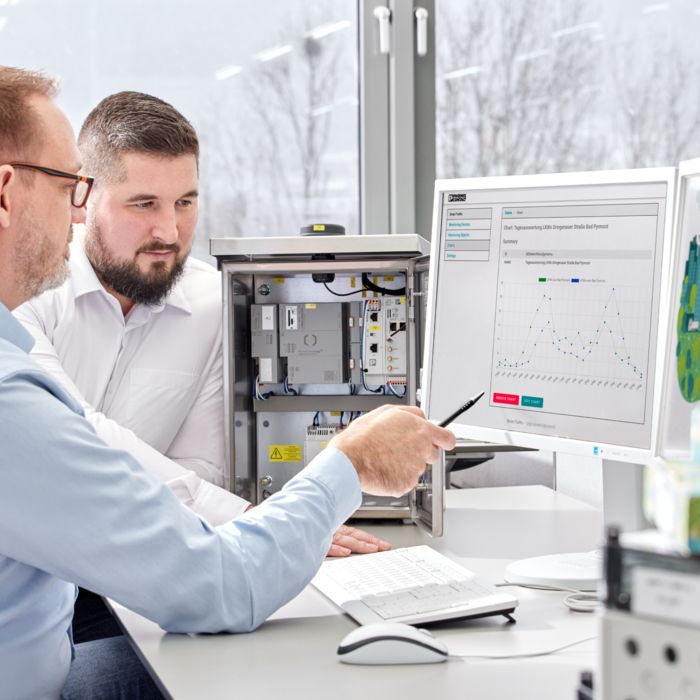
A combination of PLCnext and LoRaWAN technology is used for the smart irrigation solution. All the necessary data in the cloud for efficient irrigation control is combined via the automation system. The PLCnext Control continuously compares the current sensor values with the preconfigured cloud parameters. If the algorithm determines that a green space is too dry, the solenoid valve for the corresponding irrigation zone is opened automatically. As soon as the specified amount of water has been reached or the soil moisture has returned to normal, the valve is closed again. If the local weather station detects a rain event based on the data, the irrigation process is automatically canceled.
Our own IoT platform enables users to locate the environmental sensors on a map and display the collected measurement data clearly in individual diagrams.

